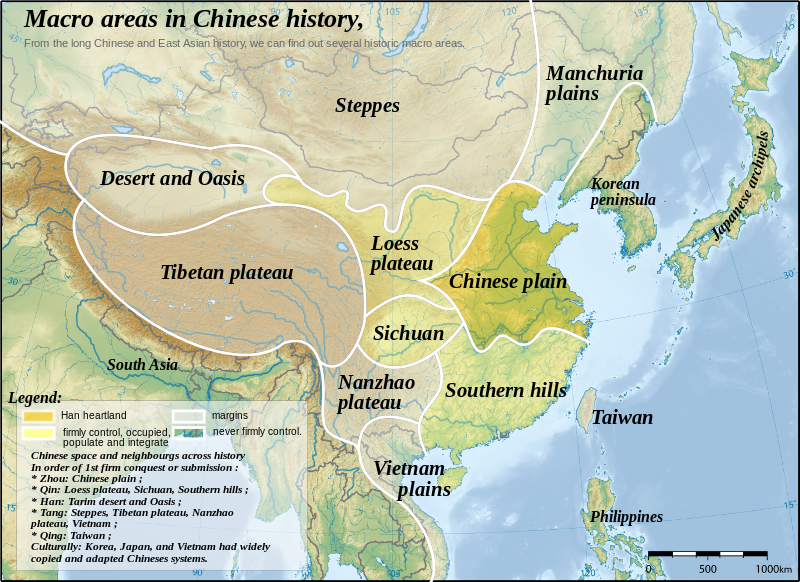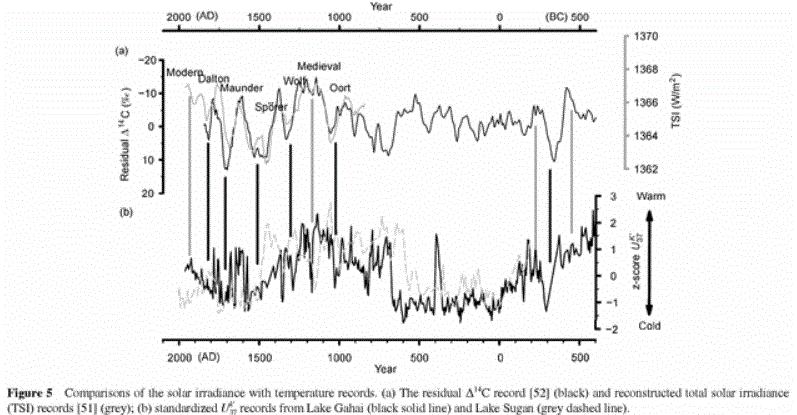A team of scientists led by HE YuXin of the Department of Earth Sciences at the University of Hong Kong examined two lake cores extracted from the Tibetan Plateau in order to reconstruct the past temperature development.
Source: East_Asia_topographic_map.png: Ksiom, the GNU Free Documentation License, Version 1.2
The two cores coming from two different lakes go back 2600 and 2200 years respectively.
Here’s the paper’s abstract (my emphasis):
Considerable efforts have been made to extend temperature records beyond the instrumental period through proxy reconstructions, in order to further understand the mechanisms of past climate variability. Yet, the global coverage of existing temperature records is still limited, especially for some key regions like the Tibetan Plateau and for earlier times including the Medieval Warm Period (MWP). Here we present decadally-resolved, alkenone-based, temperature records from two lakes on the northern Tibetan Plateau. Characterized by marked temperature variability, our records provide evidence that temperatures during the MWP were slightly higher than the modern period in this region. Further, our temperature reconstructions, within age uncertainty, can be well correlated with solar irradiance changes, suggesting a possible link between solar forcing and natural climate variability, at least on the northern Tibetan Plateau.
You can downnload or read the entire paper here.
Here we see that the Medieval Warm Period also very much existed in Asia, and was not just a local European phenomenon, as some scientists tried to suggest in the past. The past 2000 years have been marked by temperature variability – despite CO2 remaining constant at about 280 ppm – with a strong correlation to solar activity.
The paper’s conclusion also adds:
Our records show that the regional temperatures during the MWP exceeded those in the recent warm period. The estimated warmth during the MWP optimum relative to the recent level could be bracketed by the ~1.9°C estimated from Lake Gahai and ~0.5°C from Lake Qinghai. Therefore, the MWP warmth was probably in a climate state beyond the climate variability captured by the recent warm period, joining a growing body of such evidence elsewhere.
The paper proposes a “possible link between solar forcing and natural variability“. My my, aren’t we surprised!







That’s not the only place:
Go here: http://papers.ssrn.com/sol3/papers.cfm?abstract_id=1589710
Click on the download button on the right and it downloads a paper written some years ago about el nino and drought in Africa.
The next time someone tells you African drought is unique in this modern age tell them to check out the table documenting drought in Ethiopia over the past few centuries.
The paper was written before the warmist obsession really kicked in.
[…] https://notrickszone.com/2013/04/13/tibetan-temperature-reconstruction-shows-medieval-warm-period-was… […]